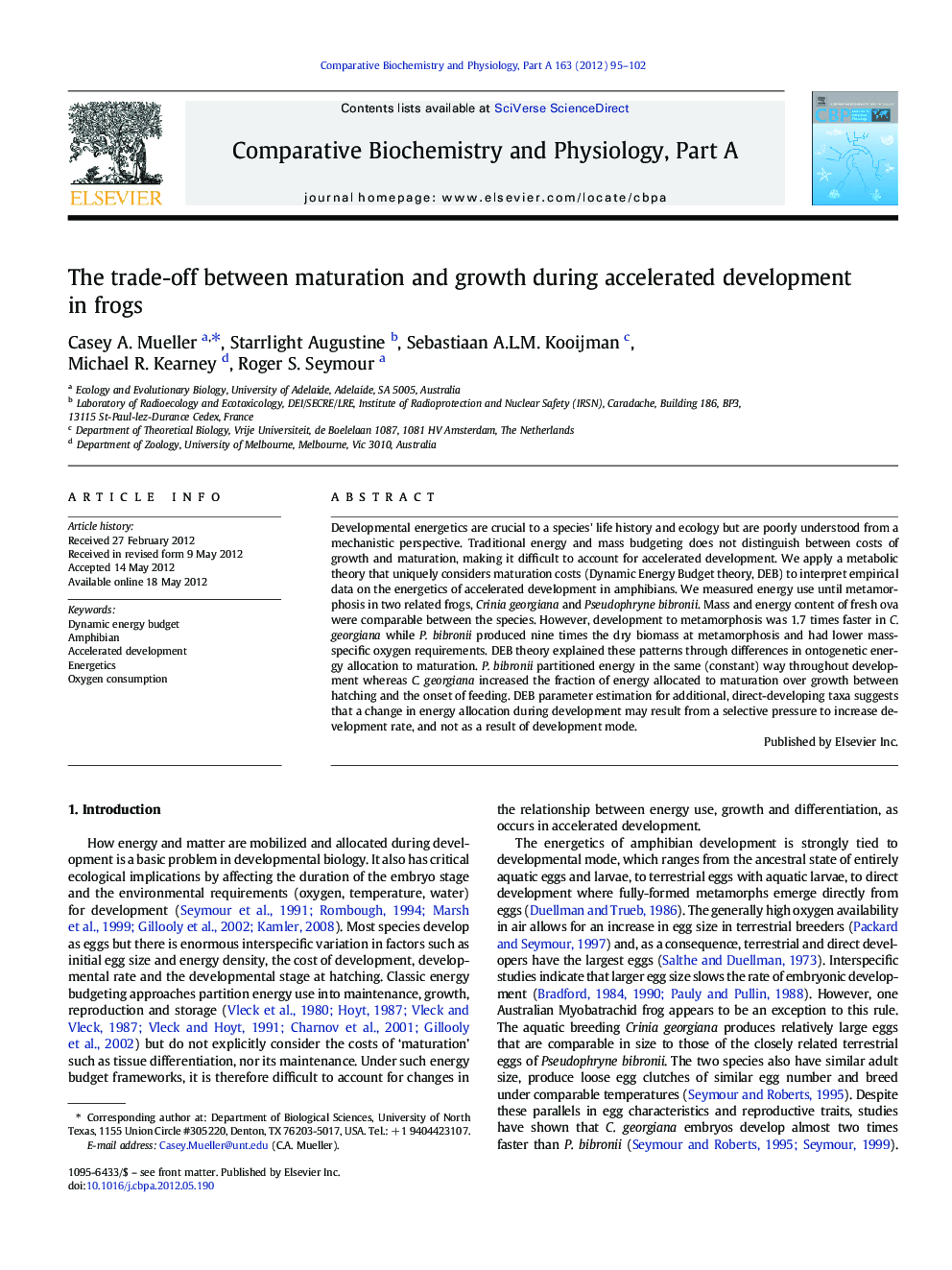| Article ID | Journal | Published Year | Pages | File Type |
|---|---|---|---|---|
| 1972357 | Comparative Biochemistry and Physiology Part A: Molecular & Integrative Physiology | 2012 | 8 Pages |
Developmental energetics are crucial to a species' life history and ecology but are poorly understood from a mechanistic perspective. Traditional energy and mass budgeting does not distinguish between costs of growth and maturation, making it difficult to account for accelerated development. We apply a metabolic theory that uniquely considers maturation costs (Dynamic Energy Budget theory, DEB) to interpret empirical data on the energetics of accelerated development in amphibians. We measured energy use until metamorphosis in two related frogs, Crinia georgiana and Pseudophryne bibronii. Mass and energy content of fresh ova were comparable between the species. However, development to metamorphosis was 1.7 times faster in C. georgiana while P. bibronii produced nine times the dry biomass at metamorphosis and had lower mass-specific oxygen requirements. DEB theory explained these patterns through differences in ontogenetic energy allocation to maturation. P. bibronii partitioned energy in the same (constant) way throughout development whereas C. georgiana increased the fraction of energy allocated to maturation over growth between hatching and the onset of feeding. DEB parameter estimation for additional, direct-developing taxa suggests that a change in energy allocation during development may result from a selective pressure to increase development rate, and not as a result of development mode.
